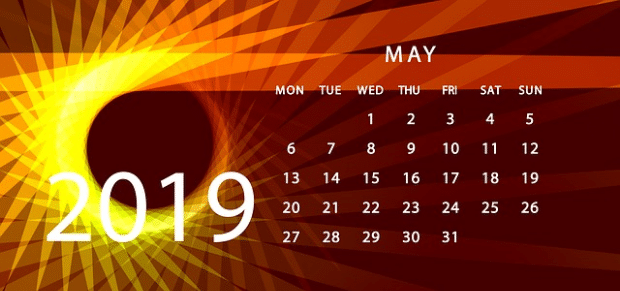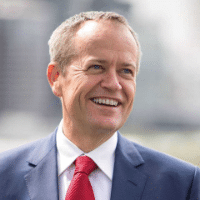The past year was a tumultuous one for Australian clean energy politics, one that lays the groundwork for 2019 renewable energy battles. In many ways 2018 was a shocker. We lost a Liberal Prime Minister, a lump of coal spent a day in Parliament and a viable national energy policy was tossed on the scrap heap after months of political bickering. This is the first instalment of our Federal Election Energy Policy Primer.
It wasn’t exactly Australia’s finest year. Yet Victorian Labor and Bill Shorten’s Federal Opposition both emerged to fight clean energy’s corner, recognising the public’s support for renewables.
Meanwhile, the Coalition ended the year as divided as it started, the NSW Coaltiion government’s Energy Minister telling his federal colleagues to pull their heads in, end “climate wars” and actively pursue lower carbon emissions.
A round-up of 2018 ‘energy politics’
Late in 2017, the Turnbull Government proposed the National Energy Guarantee (NEG). This would reduce power prices and provide a stable energy policy framework.
It was plagued by problems. Critics included most Australian states, federal Labor and the Greens as well as the Coalition’s own pro-coal lobby, led by former Prime Minister Tony Abbott.
Conflict centred on the NEG’s proposed emissions target of 26 per cent reduction on 2005 carbon levels by 2030.
Too low, said Labor and the Greens. The feeling was that the NEG would subsequently block investment in renewables like wind and solar power.
Too high, said Abbott’s mob. The government should build new coal-fired power stations instead.
Energy Minister Josh Frydenberg fought valiantly to win a NEG consensus. Yet at the eleventh hour, Liberal in-fighting ousted Malcolm Turnbull from the top job in August 2018.
Incoming Prime Minister Scott Morrison then threw the NEG overboard. Former anti-wind campaigner Angus Taylor then took over as Energy Minister.
Fossil fuel spats: What’s up with Liddell and Adani?
Major fights erupted in 2018 over the future of coal. These centred on the ageing Liddell coal-fired power plant in NSW and the beleaguered Adani coal mine in Queensland.
Tony Abbott rallied pro-coal colleagues – including former Nationals Leader Barnaby Joyce and backbencher Craig Kelly – to get behind these coal projects.
The group pressured Liddell owner AGL to keep the failing plant open or sell it, either to another buyer or the government itself. Yet AGL resisted the pressure, insisting the plant will still close in 2022.
After years of opposition from environmental groups, however, the controversial Carmichael coal mine will finally go ahead – entirely self-funded by Adani.
A scaled-back version of the central Queensland mine and rail project will proceed in 2019. Labor leader Bill Shorten has publicly opposed the project.

Labor up for 2019 renewable energy battles
In Victoria, Premier Daniel Andrews flew the flag for solar energy in 2018 with his ambitious Solar Homes program. The $1.3 billion program offered half-price for the installation of solar panels to around 720,000 Victorian owner-occupiers.
This helped the Labor leader win November’s state election in a landslide victory. Consequently, the government is following up with a $40 million solar battery rebate program.
Not to be outdone, federal Labor has also announced a far-reaching renewables program. If it wins the general election, to be held in the first half of 2019, Labor has pledged:
- Solar battery rebates for up to 100,000 households;
- Reinstatement of the NEG with higher emissions reduction target of 45 per cent by 2030; and
- A raft of solar, wind and hydroelectric projects.
The Coalition still holds coal aspirations while paying lip service to its Paris Agreement commitments.
Scott Morrison insists publicly that Australia will meet its emission targets “at a canter”. However, Climate Council figures show emissions in Australia continue to rise.
The best of the rest: Greens, One Nation and the states
So, what are the other stakeholders’ energy plans pre-election in the 2019 renewable energy battles?
- Greens: Would make it illegal to dig, burn or ship thermal coal by 2030. The party supports a transition to 100 per cent renewable energy.
- One Nation: Leader Pauline Hanson suggests a new coal-fired power station for North Queensland, NSW and Victoria respectively.
- States and territories: Tasmania, ACT and South Australia are taking a strong renewable lead while Western Australia and Northern Territory trail, a Climate Council report shows. Yet every state and territory appears to be doing more than the Coalition to boost Australia’s renewable future.
Perhaps the last word should go to NSW Energy Minister Don Harwin.
His 2018 Christmas message for federal colleagues? He said that climate change is a “scientific fact” and all governments are therefore responsible for reducing greenhouse gas emissions, now and in the future.
Watch this space. We will be updating this Federal Election Energy Policy Primer page as the election nears and the 2019 renewable energy battles heat up.












































